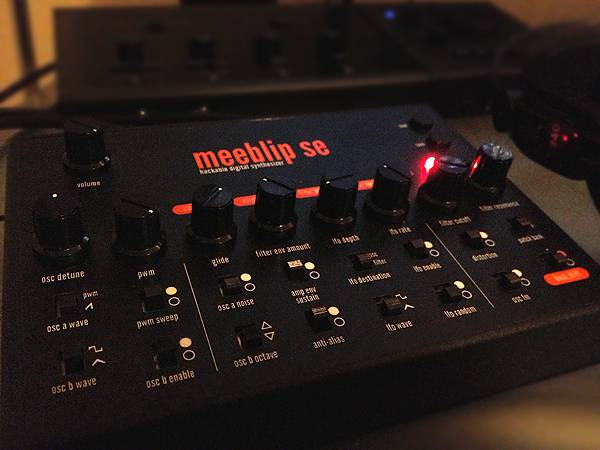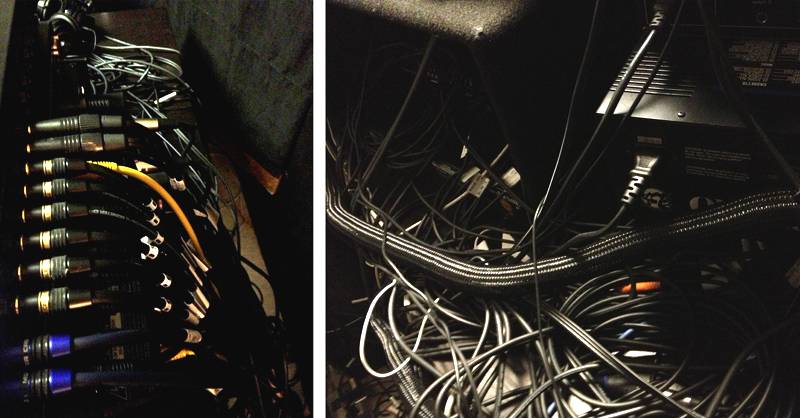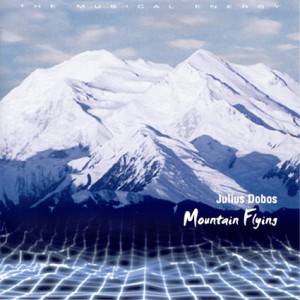“What’s wrong with not being original?” – asked the celebrity and stepped back into his mansion.
Too Many Options
Brian Eno once said: “What you need are fewer possibilities… that are more interesting. It’s not more options that you want, it’s more useful options”. I think this is more true today than ever, and I might add: those few useful options will often come from the least obvious sources. So you want to be different, express your individuality, your personal message, come up with original content? Think about how you could make your process simpler. Think about how you could use gear that not everyone uses (sorry, NI). Restrict your convenient options – set up rules that prevent you from taking the same route from idea conceptualization to production twice. Work within these new set of rules, then destroy them and create new ones. Give up as much convenience as much you can handle. Let me know what results you have achieved.
When it comes to gear or software, there is a certain temptation for many of us who like diversity in sound generation and processing, to have lots of it. However, the truth is that you have to allow time for yourself to grow up to your gear. It’s kind of like a friendship. To make new friends every week and spend thirty minutes weekly with each new friend will less likely result in a strong friendship, than meeting fewer people and getting to know them better. Which situation do you think will get you farther, a lot of acquaintances or a few close friends? So, after you have gotten to know your gear down to the smallest details, let yourself run out of the obvious options; that’s where the real discovery starts. The reward comes when you start taking different than usual approaches to achieve interesting results. I’m not talking about ignoring the presets here, I’m referring to more or less ignoring the whole system (long live Anonymous!) – the methods by which the instrument or piece of equipment is supposed to be used.
I realize that I am also guilty of surrounding myself with too much gear. I remember the times when I had a very small studio and I was able to operate it with my eyes closed (literally – even navigate in sub-menus of certain equipment). Some of those pieces are still part of Studio CS today, and I keep on finding new and interesting ways of using them. On the other hand, I still have a lot of experimenting to do with my current setup, to venture into the sonic excursions I haven’t taken before. Not only I refrain from using any presets, but I’m rarely satisfied with the results that come from the “normal use” of these pieces of gear. Ultimately, I often gravitate back toward using the equipment I had developed a more in-depth “relationship” with. (A neat example would be my Yamaha PSR-6 synth, which is basically a toy that I had bought on eBay for $20, to bring back the memories of my first childhood keyboard, a PSR-2. Today, it certainly does sound like a toy, yet those sounds are part of game menus and movie soundtracks you might have already heard… yes, a $20 synth in major productions. Other sounds from this “toy” even found their way into my upcoming album [edit: the already released forgotten future], after some multi-tracking and lots of processing. Makes me think of pointless conversations about 192kHz and the need for pristine-sounding elite preamps…
This is not to say that less is always more. Although, if you are a new, aspiring composer or producer, less is definitely more, more becomes more after (many) years of use experience. With the friend analogy, once you have a few really close friends, why not have a couple more who you can get to know just as well? But it definitely takes thousands and thousands of hours to get to the point where one can utilize a studio full of equipment in a truly original ways. Most gearheads think that it would be so cool to take over a professional studio for a week… imagine what would happen if you had all the gear you can imagine at your disposal? There is a great (I believe Hungarian) phrase to describe it: “the abundance of confusion”. Probably you wouldn’t get much interesting music done, unless you resorted to using a couple of pieces of gear.

Reflex meeblip SE – it doesn’t get much simpler than this, you would think. Actually, with an interesting combination of processes, even this simple piece of gear (the simplest equipment in Studio CS) is capable of reaching a wide range of unique sonic territories.
Several years ago I actually went through a period when I couldn’t get the music in my head realized the way I imagined – for a few months, none of my sessions were productive, at least by an elevated standard of originality. It was quite frustrating: sitting in the studio full of equipment, with ideas in my head (so not a “writer’s block”), yet I wasn’t able to get my idea to the point of solid realization. I thought I was ready to use a great diversity of technology simultaneously – turns out I wasn’t. After many lost session, I solved this issue by temporarily eliminating most of the equipment from my process and using only a couple of pieces. It worked great. Then I would designate a couple of months to work only with a very limited set of equipment, to get the most out of each piece according to my given needs. You would think of this masochist method as restrictive, but it was quite the opposite. After years of working this way, I have almost grown up to Studio CS and developed a really good yet different “connection” with each piece.
Lack of true physical connection
Cables. They’re great. They let you be modular. They let you break rules. They let you hold your sounds and music in your hands while you’re deciding where to send them next. Cables stand for hands-on, physical connections and outboard gear. No plugins, no mouse, no updates, no launch errors, no forced upgrades. They represent the real stuff, something tangible. Virtual connections are just like software – flexible, convenient, but try to grab the ones and zeros they are made of. They don’t exist. Cables definitely do… and have something physical on both ends. A tube compressor. An analog synth. An effect pedal. There is nothing wrong with using virtual connections, but at least, try to combine the best of both words and keep some real cables in the part of your signal path that you wouldn’t even think could be used creatively.

Spare cables with undetermined purpose laying around before my recent studio relocation. I love cables; in my mind, they represent flexibility and provide an experience to music production that’s as far form a mouse pointer as it gets.
Sure, they’re messy. So is cooking, as opposed to junk food from the drive-thru.
Speaking of physical connections, I have to mention the very interface we use to input music into our sequencers or recording software. These days we use software for most everything, and from year to year it takes less and less effort to interface with computers. The mouse is going out, leaving space for the one- and more finger-operation of touch screens. While I recognize their advantages and superiority over the mouse, I believe that they can’t yet replace (but rather complement) the act of physically touching actual 3-dimensional objects – in music production, these can be sliders, faders, buttons, knobs, dials, keys, keyboards, strings, sticks… you name it. The expressiveness we can transfer through, and the tactile feedback we receive from these objects is much more diverse than using a flat-surface touch screen for everything. We use a mouse or two fingers for browsing, email, work, shopping online, watching movies online… shouldn’t the process of creation be utilizing some different gestures than those that we use throughout the day anyway? No wonder that some of the electronic music instrument developers see the future of music technology in the way we interface with our instruments, rather than the sound generator itself. Robert Moog realized this early on, and focused on theremins before he re-started his synth manufacturing operation in 2002. Even then, his biggest new addition to the Voyager (relative to the Model D) was the 3-axis control pad. (More about the consequence of diverse interfaces and the advantages of physically generating and performing music in my Analog vs. Digital synths article.)

More analog and digital cables at Studio CS. Some connect synths to effect units, others connect seemingly unmatchable pieces of gear, taking the sound to a new direction.
Templates and signature sounds
Sometimes a computer virus can be a good thing. Of course, they are a curse when they strike just before you wrap up an important project and they wipe out your drive. But when you “only” lose the old files or templates you use for your projects, a virus can be a great benefit and have a healthy cleansing effect on your creativity. Having to re-create things or start from scratch in most cases ensures that you’re going to end up with different, often more interesting results, maybe better ones than what you would have gotten with your trusty templates.
In music, repeating yourself is too easy; it’s for the lazy and those who prefer convenience over originality (see quote on top). Of course, I’m talking about independent work – not industrial production work, like film scoring or mainstream songwriting, where safety, convenience, speed, trends and even imitation can often be more important (and better paid for) factors than originality; it usually doesn’t matter if the composer uses his or her template (or even “borrows” someone else’s), as long as it fits into the process: done as expected, submitted on deadline. For these quick and efficient type of projects, viruses can halt production and cause serious financial damage.
About a decade ago I stopped saving my sounds and settings into the synths and processors I created them with. I decided to deliberately cause this inconvenience for myself, to make sure that even when one of my previously used sounds would work well in a new piece, I would have to create a new, original one. I have not regret it a bit. Just think about the pre-digital times, when sounds, effects, mixing settings couldn’t be saved simply by pushing a button. How much more originality came from that era, when most sounds and most every piece of music was created from scratch, and was often impossible to repeat (perform) the same way. Originality wasn’t a goal artists were forcing, it just happened organically. Even the patch drawings (of settings) didn’t give the composer exactly the same results every time.
The only two exceptions from this practice are performances and signature sounds. If the style of a composer or producer is heavily characterized by the sounds or instruments used, sometimes it’s understandable if s/he wants to re-use these elements; that is, if the reason is not laziness but the desire to evoke the feel of a previous music piece, to create a link to an earlier work (hopefully rather an emotional, than a promotional link), or to perform the music live. For instance, I have kept three of my used-to-be signature sounds (they come from the time of Mountain Flying) but have used them maybe three times in the past 15 years. The main lead sound from Mountain Flying I, II and III had been quietly resting in a sound module for years before I decided to use it again for the lead part of Fly Away (on Transitions). Fans had been asking for a sequel to Mountain Flying, and though I was not intending to create a sequel album, one day in 2004 the track Fly Away was born. My old MF sound not only worked perfectly for the lead, but was largely responsible for bringing back the feel of the windy, snow-covered mountains from 1999’s Mountain Flying.

1999’s Mountain Flying CD Cover (Periferic Records original edition)
Signature sounds and live performances aside, I can only respect and celebrate those composers and producers who sound themselves but do not sound the same over and over again – especially in electronic music, where texture is a major building block of music. I suspect the same applies to painters, sculptors, graphic artists, videographers, animators, writers, poets and most everyone who creates original work – where templates can be the enemy of originality. Convenient, but limiting: they might not let you see different directions, take new approaches, change up the usual process.
Have you discovered some other not-so-obvious enemies of originality? Comment or let me know.




One Response